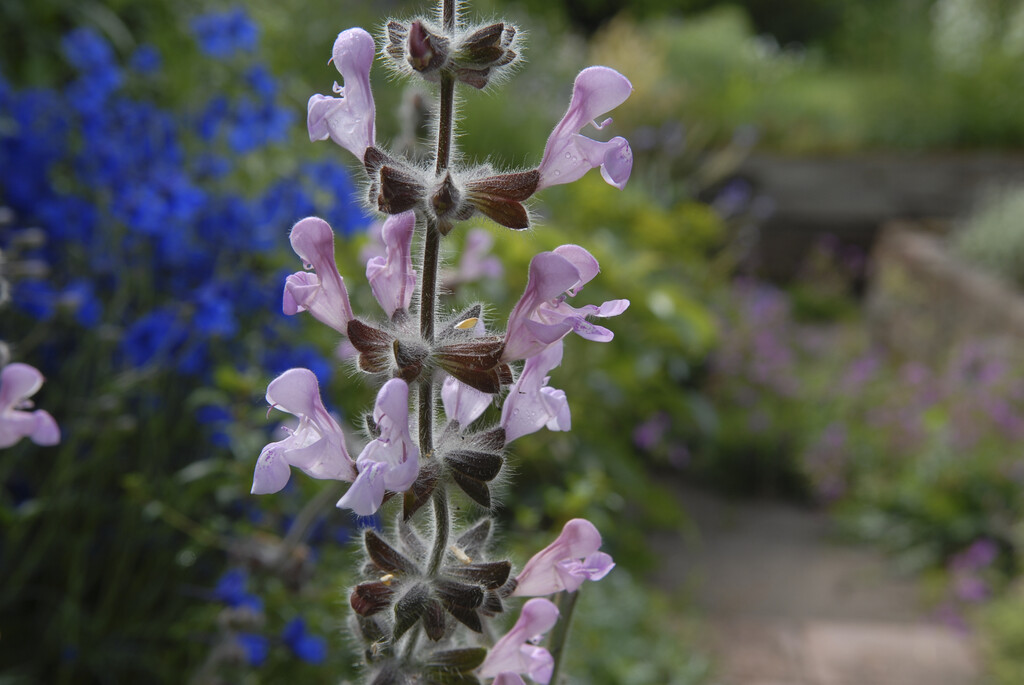Salvia recognita
Turkish cliff sage
A clump-forming, woody-based perennial to about 1m in height with mid to greyish-green thickly textured leaves, and rose-pink lipped flowers which have downy dark reddish-pink bracts and stems, produced in summer
Size
Ultimate height
0.5–1 metresTime to ultimate height
2–5 yearsUltimate spread
0.1–0.5 metresGrowing conditions
Moisture
Moist but well–drained, Well–drainedpH
Acid, Alkaline, NeutralColour & scent
| Stem | Flower | Foliage | Fruit | |
| Spring | Green | |||
|---|---|---|---|---|
| Summer | Pink | Green | ||
| Autumn | Green | |||
| Winter |
Position
- Full sun
- Partial shade
Aspect
South–facing or West–facing
Exposure
Exposed or Sheltered Hardiness
H4Botanical details
- Family
- Lamiaceae
- Native to GB / Ireland
- No
- Foliage
- Semi evergreen
- Habit
- Clump forming
- Genus
Salvia can be annuals, biennials, herbaceous or evergreen perennials, or shrubs. They have paired, simple or pinnately lobed, often aromatic leaves and 2-lipped flowers in whorls, forming simple or branched spikes or racemes
- Name status
Unresolved
How to grow
Cultivation
Will grow well in soils that are moderately fertile and moist but well-drained preferably in full sun but will tolerate some shade. Once the plant is established it will require less watering.
Propagation
Propagate by semi-ripe cuttings in summer
Suggested planting locations and garden types
- City and courtyard gardens
- Cottage and informal garden
- Mediterranean climate plants
- Wildlife gardens
- Coastal
- Gravel garden
- Flower borders and beds
Pruning
Cut back faded flower spikes to prolong flowering
Pests
Generally pest-free
Diseases
May be susceptible to honey fungus (rarely), powdery mildews, verticillium wilt and foot and root rots
Get involved
The Royal Horticultural Society is the UK’s leading gardening charity. We aim to enrich everyone’s life through plants, and make the UK a greener and more beautiful place.
